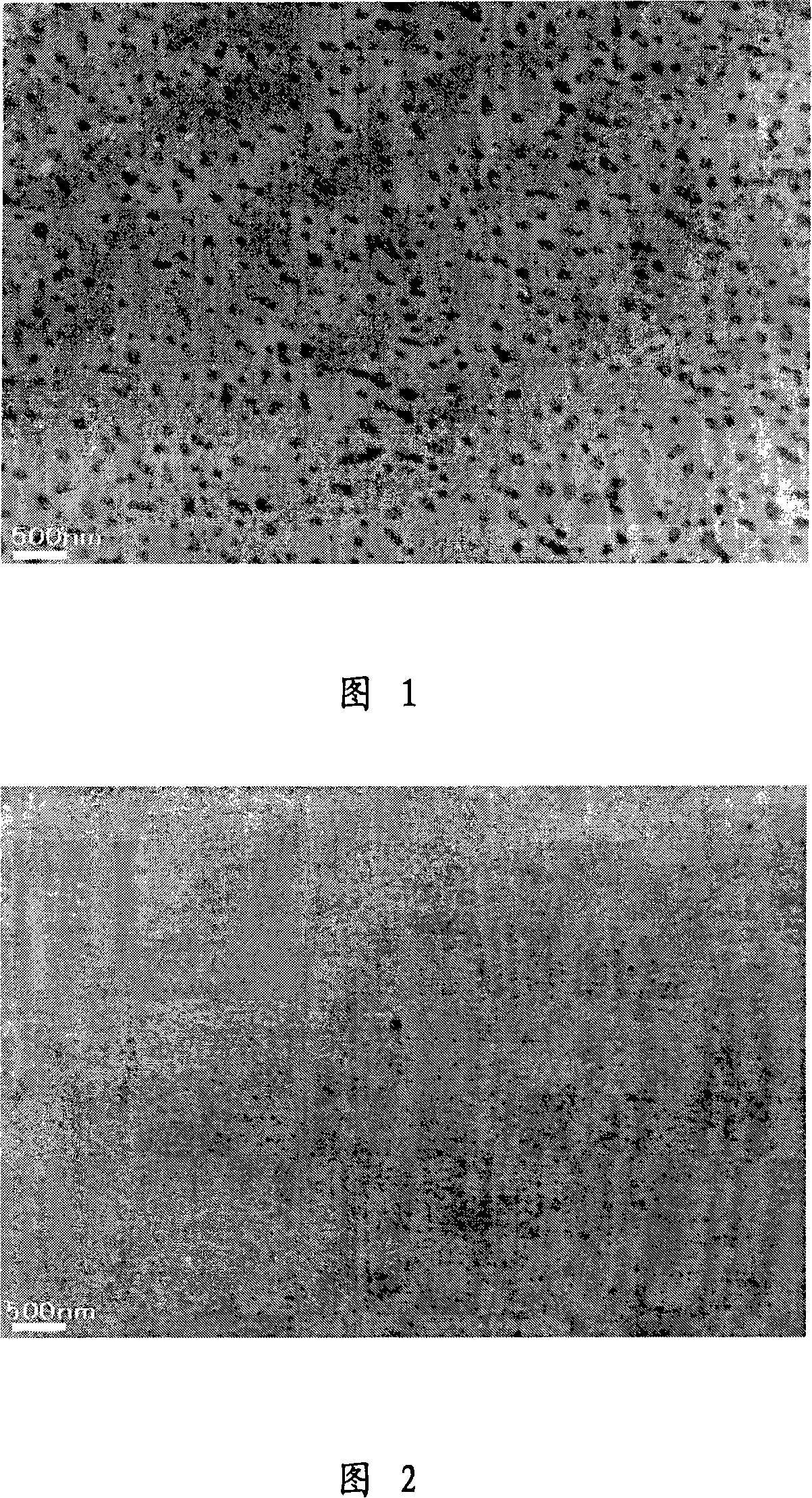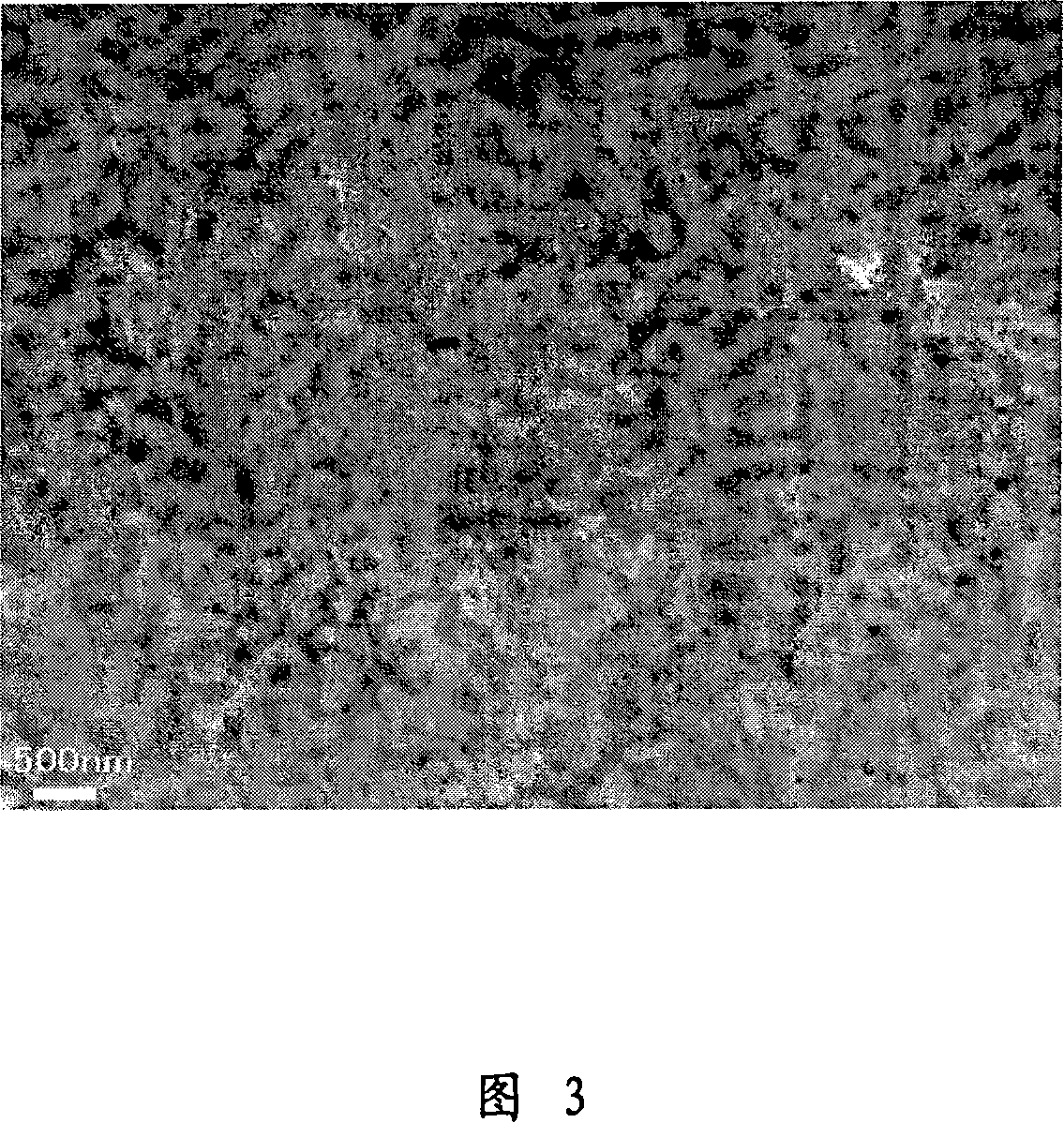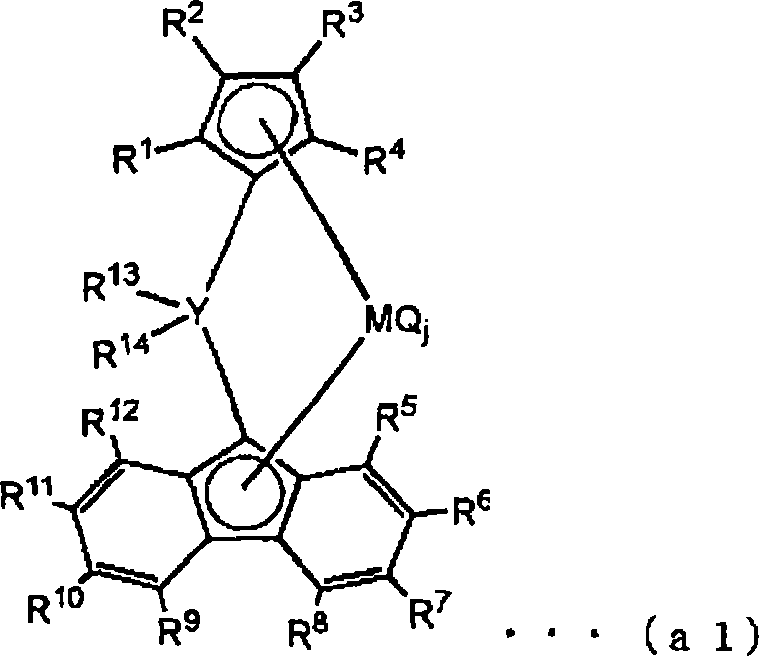Propylene-based polymer composition, use thereof, and method for producing thermpolastic polymer composition
A technology of propylene-based polymer and thermoplastic polymer, applied in the field of propylene-based polymer composition, can solve the problems such as heat resistance and low temperature impact strength to be increased, and achieve the effect of excellent heat resistance
- Summary
- Abstract
- Description
- Claims
- Application Information
AI Technical Summary
Problems solved by technology
Method used
Image
Examples
Embodiment
[0879] Hereinafter, the present invention will be specifically described with reference to examples, but the present invention is not limited to these examples.
[0880] Performance Measures
[0881] [intrinsic viscosity [η]]
[0882] Intrinsic viscosity is measured at 135°C using decalin as solvent. That is, weigh about 20 mg of a polymer in the form of powder, pellets or resin blocks, dissolve it in 15 ml of decalin, and measure the specific viscosity η of the decalin solution in an oil bath at 135° C. sp . After diluting the decalin solution by adding 5 ml of decalin, measure its specific viscosity η in the same way sp . Repeat the dilution operation twice more, and η sp The value of / C is extrapolated to zero concentration (C) to obtain the intrinsic viscosity (see equation below).
[0883] [η]=lim(η sp / C)(C→0)
[0884] [Molecular weight distribution (Mw / Mn)]
[0885] The molecular weight distribution (Mw / Mn) was measured using Gel Permeation Chromatography Mod...
Embodiment 4
[0950] (Synthesis of Propylene / Ethylene / Butene Copolymer) (B-4)
[0951] At room temperature, 1834 ml of dry hexane, 120 g of 1-butene, and triisobutylaluminum (1.0 mmol) were charged into a 4000 ml polymerization vessel sufficiently purged with nitrogen. The temperature inside the polymerization vessel was increased to 60° C., propylene was introduced to raise the system pressure to 0.56 MPa, and then ethylene was introduced to adjust the system pressure to 0.75 MPa. Then, in the polymerization container, add toluene solution, in this toluene solution, the dibenzylidene (3-tert-butyl-5-methylcyclopentadienyl) synthesized in the synthetic example 1 of 0.001mmol ( 2,7-Di-tert-butylfluorenyl)zirconium dichloride had been brought into contact with 0.3 mmol (relative to aluminum) of methylaluminoxane (manufactured by Tosoh Fine Chemicals Co., Ltd.). Polymerization was carried out for 20 minutes with the internal temperature kept at 60°C, and ethylene was supplied to maintain the ...
Embodiment X1
[0964] 80 parts by weight of the propylene-based polymer (A-1) (MFR: 25g / 10min) and 20 parts by weight of the propylene / ethylene / butene copolymer (B-1) obtained in Polymerization Example 1 (the total amount 100 parts by weight) and 0.1 parts by weight of tris(2,4-di-tert-butylphenyl) phosphate as a second antioxidant, 0.1 parts by weight of n-octadecyl-3- as a heat-resistant stabilizer (4'-Hydroxy-3',5'-di-tert-butylphenyl)propionate and 0.05 parts by weight of calcium stearate as a hydrochloric acid absorbent were mixed. In addition, 0.3 parts by weight of a phosphate ester type nucleating agent (ADK STAB NA-21, manufactured by AsahiDenka Co., Ltd.) was mixed into 100 parts by weight of the composition, and then used by The twin-screw extruder BT-30 (Φ30mm, L / D=46, rotating in the same direction) manufactured by Plabor Co., Ltd., the temperature is 200°C, the resin extrusion speed is 60g / min, 200rpm. Kneading is performed to obtain a propylene-based polymer composition. Its...
PUM
| Property | Measurement | Unit |
|---|---|---|
| melting point | aaaaa | aaaaa |
| softening point | aaaaa | aaaaa |
| softening point | aaaaa | aaaaa |
Abstract
Description
Claims
Application Information
 Login to View More
Login to View More - R&D Engineer
- R&D Manager
- IP Professional
- Industry Leading Data Capabilities
- Powerful AI technology
- Patent DNA Extraction
Browse by: Latest US Patents, China's latest patents, Technical Efficacy Thesaurus, Application Domain, Technology Topic, Popular Technical Reports.
© 2024 PatSnap. All rights reserved.Legal|Privacy policy|Modern Slavery Act Transparency Statement|Sitemap|About US| Contact US: help@patsnap.com










